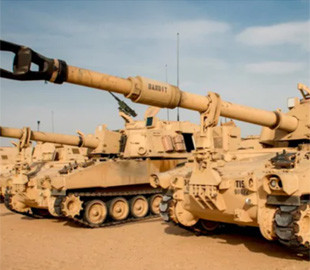
The war in Ukraine played a key role in the decision to strengthen the firepower with self-propelled guns, experts believe. Perhaps the Pentagon has come to the conclusion that artillery, as before, remains an important element of combat operations.
The US Army plans to purchase 689 units of 155-mm M109A7 self-propelled howitzers in 2025 and maintain them in working order until 2050. This initiative is part of a long-term strategy to strengthen artillery capabilities and fill the gap left by the cancellation of the NLOS-C self-propelled gun program in 2009, Army Recognition reported on February 3.
The M109A7 self-propelled gun is being developed by BAE Systems as part of the Paladin Integrated Management (PIM) program. It is designed to replace the aging M109A6 Paladin and offers significant improvements in mobility, firepower, and reliability.
This self-propelled gun is a deep modernization of the M109 platform, the main changes concern the chassis and fire control system. Key aspects of the improvements:
- The chassis will be unified with the M2 Bradley infantry fighting vehicle, including the suspension, transmission, and engine, which simplifies logistics and maintenance.
- The turret is used from the M109A6 Paladin version, but the artillery part has received a number of updates:
- Electric guidance drives instead of outdated hydraulic ones systems.
- Mechanized loading system, although it still requires manual intervention.
- Digital fire control system, which increases accuracy and speed of aiming.
It is noted that the US Army is implementing the modernization of the M109A7 in two stages. The first will optimize the chassis and suspension to increase mobility and cross-country ability. Then the fire performance will be improved, the accuracy of fire will be increased, which will generally expand the range of fire missions.
Modernization of self-propelled guns: Ukrainian experience
Western analysts write that the cancellation of the NLOS-C program in 2009 left the US artillery forces without a modern platform for high-precision fire at long distances.
At the same time, Defense Express observers noted that currently approximately 400 M109A6 units are in service, and more than 270 self-propelled guns have already been upgraded to the M109A7 version. However, an additional nearly 850 M109A6 howitzers were placed in reserve, as it was previously believed that artillery had lost its significance on the battlefield.
The Pentagon's decision indicates that the experience of the war in Ukraine played a key role in the review of priorities, demonstrating that artillery, as before, remains an important element of combat operations. The purchase of new M109A7s and their continued support until 2050 means that the M109 family, which has been in service since 1963, will last at least 87 years.
“So the plan to support these self-propelled guns until 2050 means that they should “celebrate” 87 years in service. Moreover, they objectively have every chance of meeting their 100th anniversary,” — experts concluded.

